Abstract
Between August 1994 and July 1995, 11,517 primary school children aged 6-11 years in the south-eastern Iranian city of Bam, comprising 5560 (48.3%) girls and 5957 (51.7%) boys, were examined for the presence of active lesions or scars of cutaneous leishmaniasis (CL). There was a trend towards increasing prevalence with age, the prevalence being 10.7% in 6-year-old and 20% in > or = 11-year-old children. Overall, 1.3% of the children had active lesions and 14.3% had scars. There was no significant difference between the sexes in the prevalence of active lesions and/or scars. Of the children examined, 54 (0.5%) had leishmaniasis recidivans: 19 girls (35.2%) and 35 boys (64.8%). The number of active lesions or scars per child ranged from 1 to 10. The majority (82.3%) had 1 lesion, 12.4% had 2 lesions, and 5.3% had > or = 3. The average number of lesions was 1.08 (1.03 in girls and 1.18 in boys). The face was the part of the body most commonly involved (63.6%), followed by the hands (20.9%), legs (12.8%) and other parts of the body (2.7%). Examination of isolates from 14 children revealed that in 13 (92.9%) the causal organism was Leishmania tropica and in the other (7.1%) L. major. The survey indicates that the geographical distribution of CL is far wider than previously thought. It also shows that Bam is a suitable areas for a vaccine field trial.
Full text
PDF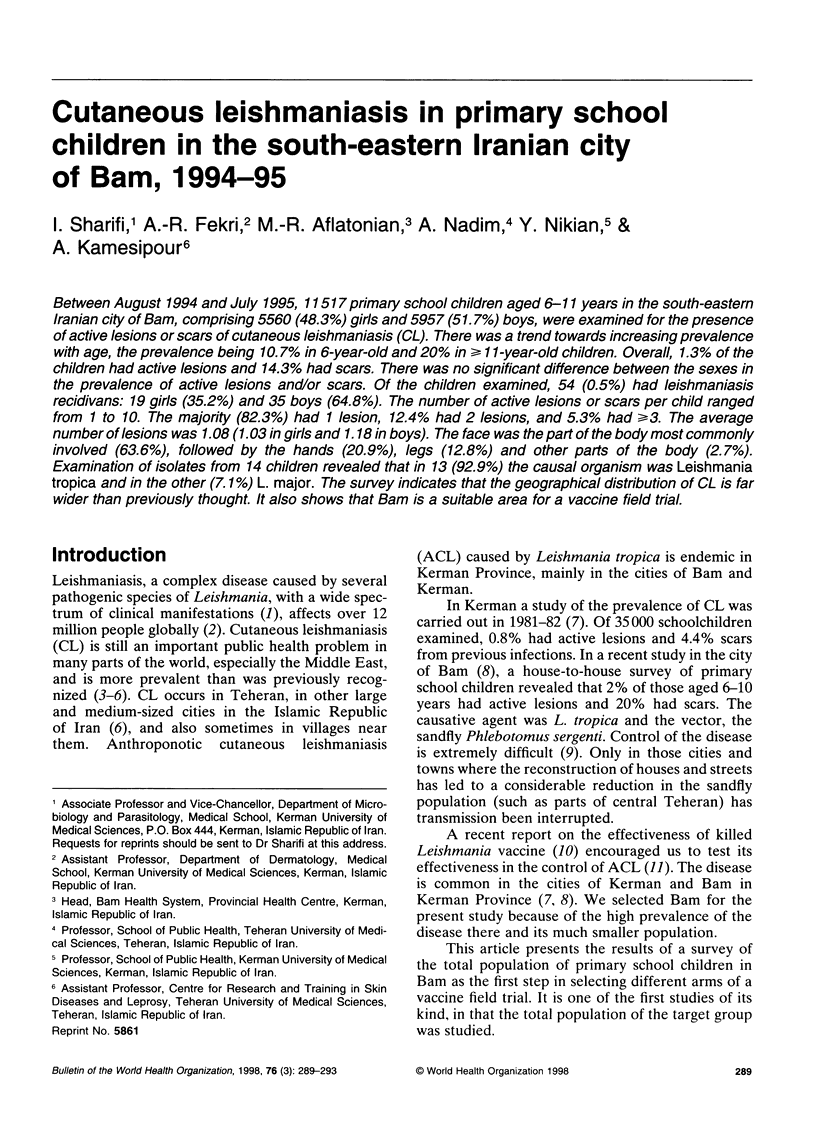
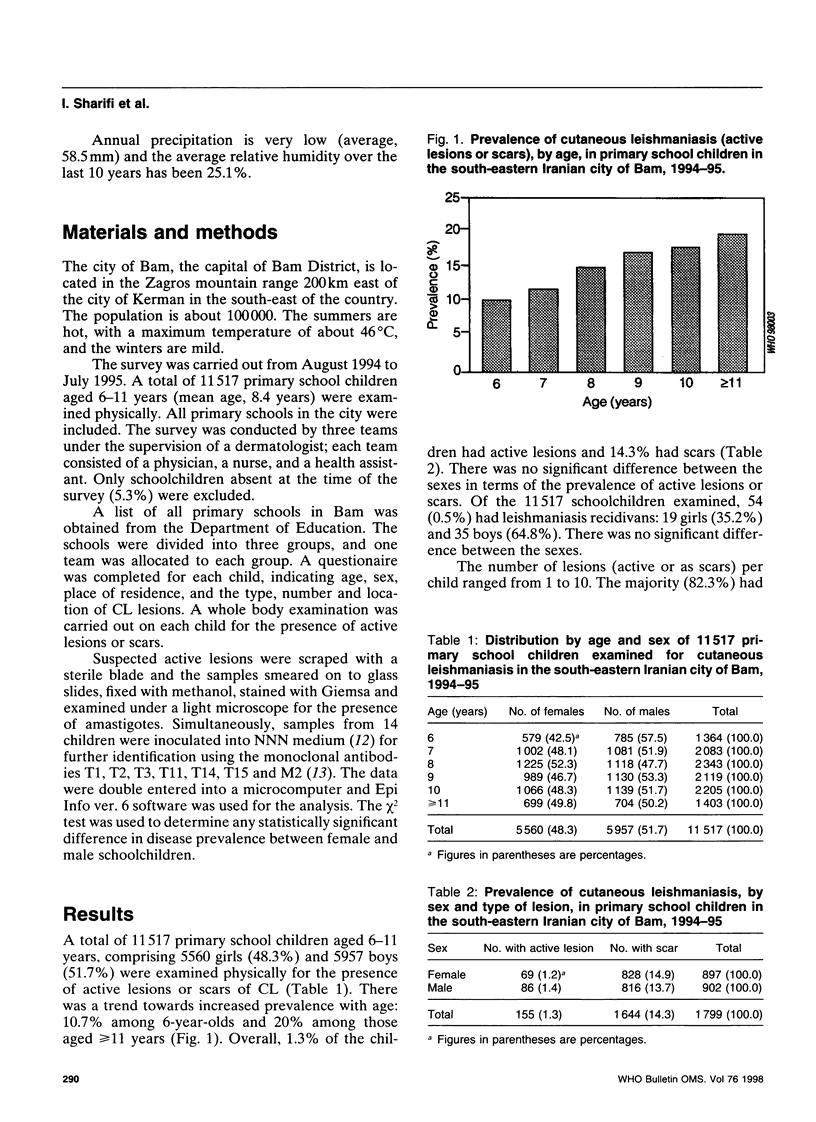
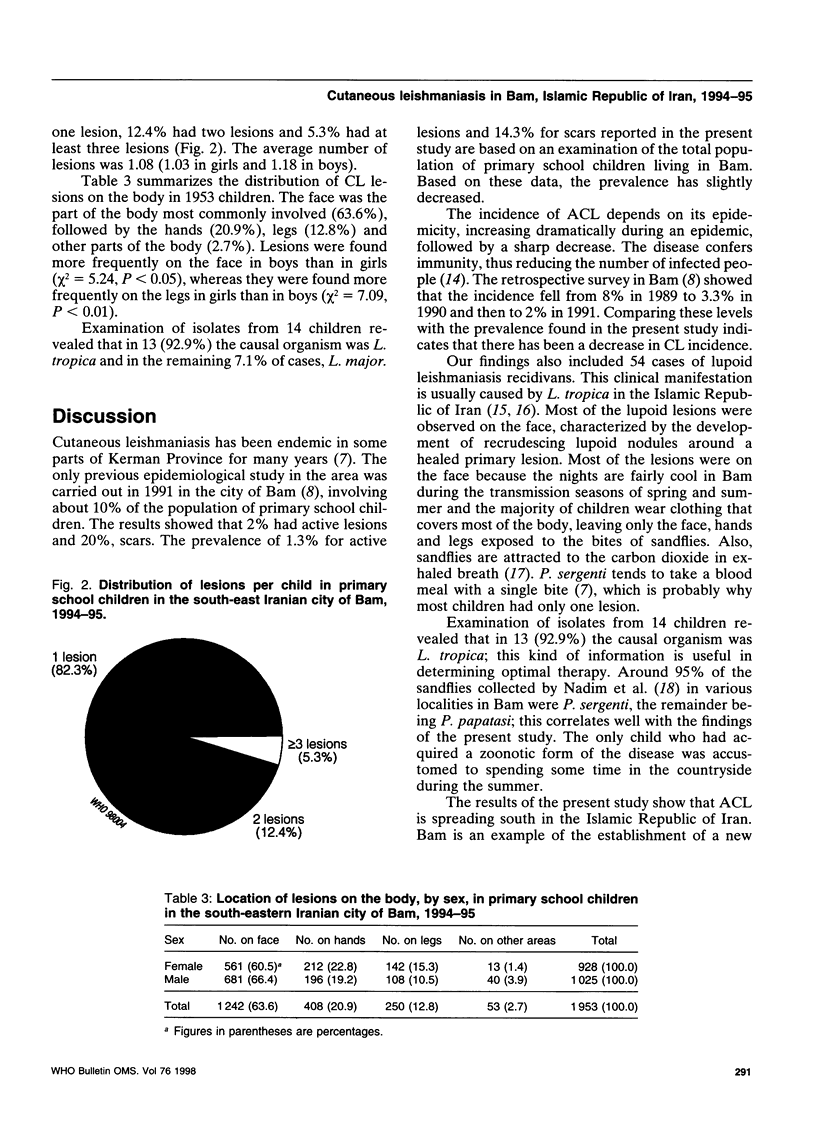
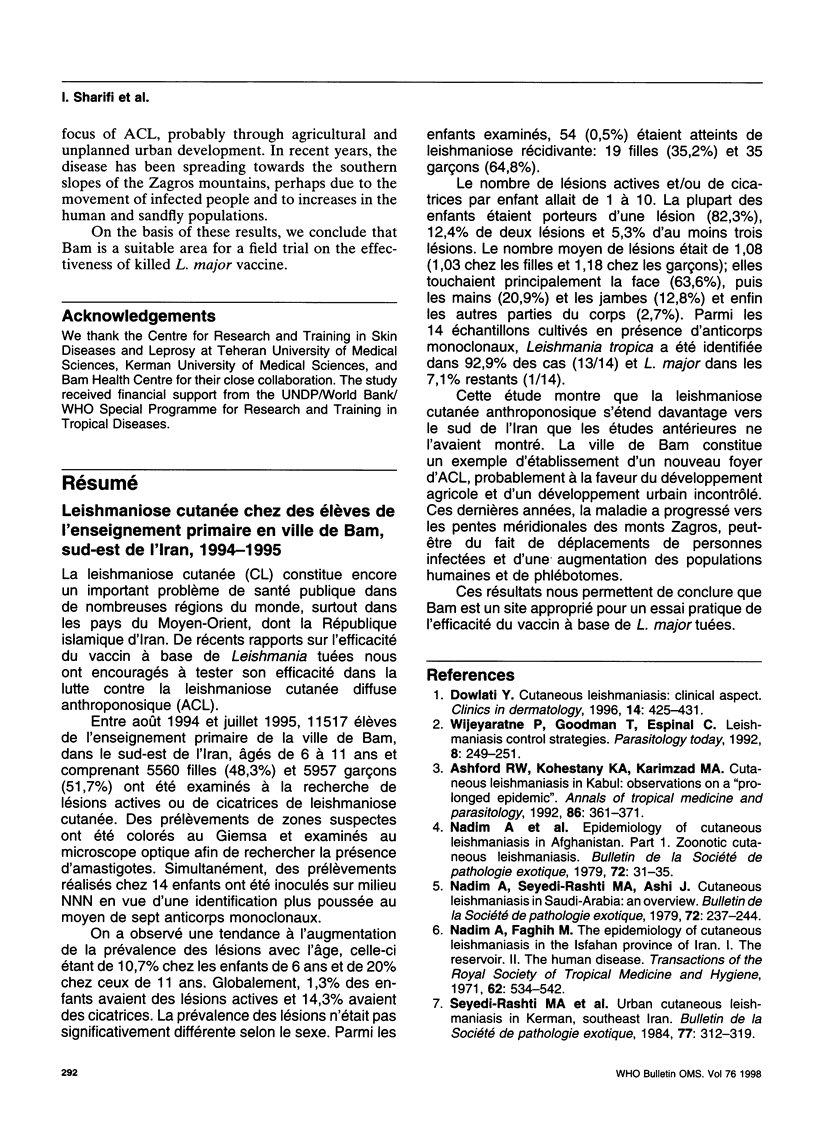
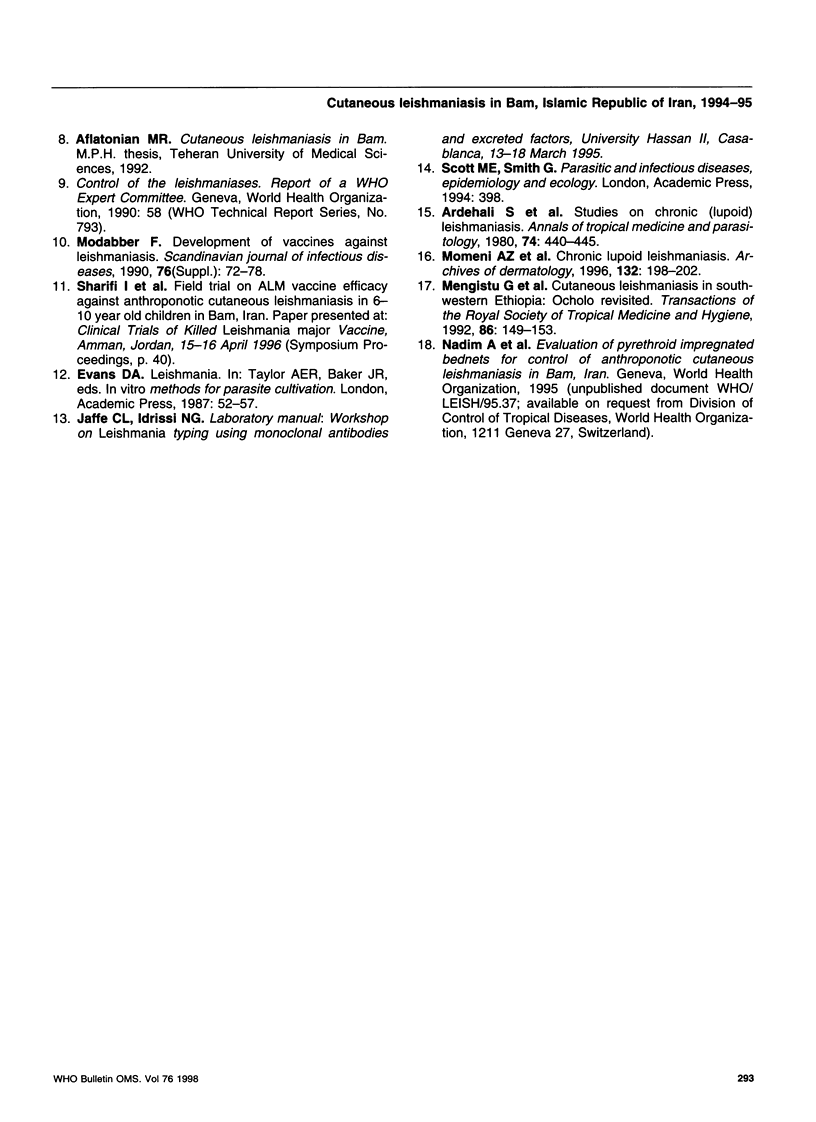
Selected References
These references are in PubMed. This may not be the complete list of references from this article.
- Ashford R. W., Kohestany K. A., Karimzad M. A. Cutaneous leishmaniasis in Kabul: observations on a 'prolonged epidemic'. Ann Trop Med Parasitol. 1992 Aug;86(4):361–371. doi: 10.1080/00034983.1992.11812679. [DOI] [PubMed] [Google Scholar]
- Dowlati Y. Cutaneous leishmaniasis: clinical aspect. Clin Dermatol. 1996 Sep-Oct;14(5):425–431. doi: 10.1016/0738-081x(96)00058-2. [DOI] [PubMed] [Google Scholar]
- Mengistu G., Laskay T., Gemetchu T., Humber D., Ersamo M., Evans D., Teferedegn H., Phelouzat M. A., Frommel D. Cutaneous leishmaniasis in south-western Ethiopia: Ocholo revisited. Trans R Soc Trop Med Hyg. 1992 Mar-Apr;86(2):149–153. doi: 10.1016/0035-9203(92)90546-o. [DOI] [PubMed] [Google Scholar]
- Momeni A. Z., Yotsumoto S., Mehregan D. R., Mehregan A. H., Mehregan D. A., Aminjavaheri M., Fujiwara H., Tada J. Chronic lupoid leishmaniasis. Evaluation by polymerase chain reaction. Arch Dermatol. 1996 Feb;132(2):198–202. doi: 10.1001/archderm.132.2.198. [DOI] [PubMed] [Google Scholar]
- Nadim A., Faghih M. The epidemiology of cutaneous leishmaniasis in the Isfahan province of Iran. I. The reservoir. II. The human disease. Trans R Soc Trop Med Hyg. 1968;62(4):534–542. doi: 10.1016/0035-9203(68)90140-5. [DOI] [PubMed] [Google Scholar]
- Nadim A., Javadian E., Noushin M. K., Nayil A. K. Epidemiology of cutaneous leishmaniasis in Afghanistan. Part I: Zoonotic cutaneous leishmaniasis. Bull Soc Pathol Exot Filiales. 1979 Jan-Feb;72(1):31–35. [PubMed] [Google Scholar]
- Nadim A., Seyedi-Rashti M. A., Ashi J. Cutaneous leishmaniasis in Saudi-Arabia: an overview. Bull Soc Pathol Exot Filiales. 1979 May-Jun;72(3):237–244. [PubMed] [Google Scholar]
- Seyedi-Rashti M. A., Keighobadi K., Nadim A. Urban cutaneous leishmaniasis in Kerman, Southeast Iran. Bull Soc Pathol Exot Filiales. 1984 May-Jun;77(3):312–319. [PubMed] [Google Scholar]


